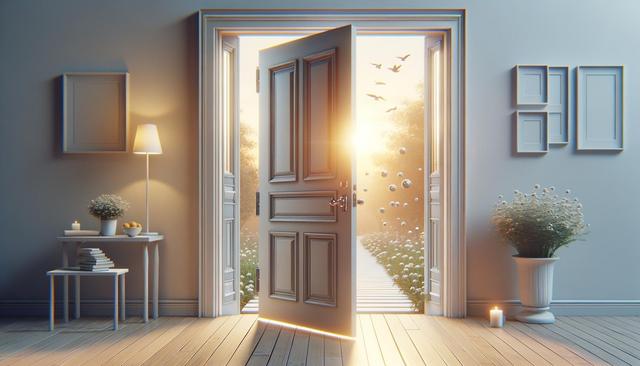
Rethinking Entryways: The Growing Trend of Skipping Front Doors
The Evolution of Traditional Home Entrances
For centuries, the front door has symbolized welcome, security, and aesthetic appeal. But as architectural preferences evolve, homeowners and designers are questioning its necessity. The trend of skipping front doors is part of a broader movement toward minimalist and functional living. In modern neighborhoods, it’s increasingly common to see homes that prioritize alternative entry points—such as side doors or garage entries—as the main access route.
This shift is not just aesthetic. It reflects changes in lifestyle and daily routines. Many families enter and exit their homes through garages or back doors, especially when those entries are closer to parking areas or more aligned with internal traffic flow. As a result, the front door becomes more of a decorative element than a practical one. In some new builds, it’s even omitted entirely in favor of streamlined designs that emphasize privacy and efficiency.
Design Motivations Behind Skipping Front Doors
Architects and homeowners are embracing the idea of skipping the front door for several reasons. One of the most compelling is the desire to simplify the home’s exterior. Clean lines, uninterrupted facades, and seamless transitions between indoor and outdoor spaces are all easier to achieve when a prominent front doorway is removed.
Other design motivations include:
- Maximizing usable interior space that would otherwise be allocated to a formal entryway
- Reducing construction costs associated with elaborate front porches and entry features
- Enhancing energy efficiency by limiting openings in the building envelope
- Improving security by consolidating access points to more controlled areas
By redefining how people enter their homes, designers are also shifting the focus to more personalized and functional layouts. For example, a home might open directly into a mudroom or kitchen area, supporting a more intuitive flow for daily activities.
Practical Considerations and Challenges
Skipping the front door isn’t without its challenges. For one, there are cultural and social expectations tied to having a recognizable front entrance. Visitors might be confused or feel unwelcome if they can’t easily find a way in. Additionally, emergency services rely on front entries to access homes quickly, which may raise concerns about safety and accessibility.
There are also practical concerns such as:
- Deliveries: Couriers often look for a front door to drop packages
- Resale value: Some buyers may be uncomfortable with unconventional entry layouts
- Building codes: Local regulations may require a formal entryway or specific access points
To address these issues, some homeowners incorporate subtle but functional entryways on the side or back of the house, clearly marked and easily accessible, yet not a traditional “front door.” This compromise allows for creative freedom while still meeting practical needs.
Security and Privacy Implications
One of the unexpected benefits of omitting a front door is the enhanced sense of privacy and security it can offer. With fewer points of entry, it’s easier to monitor access and restrict visibility into the home. In urban settings, this can be particularly valuable, as homes are often built close together, and street-facing windows and doors can expose interior spaces to public view.
Some privacy and security advantages include:
- Fewer entry points mean fewer vulnerabilities
- Alternative entrances can be placed in less visible locations
- Landscaping and fencing can be used more effectively without a front path
However, it’s important to plan carefully. Homeowners should ensure that alternative entrances are well-lit, easily accessible, and compliant with fire safety regulations. Smart locks, intercom systems, and security cameras can be integrated to maintain convenience and safety.
Alternatives to the Traditional Front Door
For those not ready to eliminate the front door entirely, there are design alternatives that minimize its prominence while still offering functionality. Some homes use recessed or hidden front entries that blend into the facade, maintaining the sleek look while fulfilling traditional roles. Others place entrances on the side, using pathways or signage to guide visitors discreetly.
Creative alternatives include:
- Courtyard entrances that provide a private transition space
- Sliding or pivot doors that serve as both entry points and design features
- Integrated garage-to-home entries that serve multiple purposes
These approaches allow homeowners to retain control over how their spaces are accessed and perceived, without adhering strictly to conventional layouts. By thinking outside the box, they can create homes that better serve their daily needs and aesthetic preferences.
Conclusion: Embracing New Norms in Home Design
Skipping the front door is more than a bold design decision—it’s a reflection of changing lifestyles, values, and priorities. While it may not be suited for every home or community, it offers a compelling option for those looking to rethink how they interact with their living spaces. By weighing practicality, aesthetics, and social norms, homeowners can decide whether this trend aligns with their vision for a more functional and personalized home.